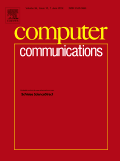
COMPUTER COMMUNICATIONS
Scope & Guideline
Leading the Charge in Technological Advancements
Introduction
Aims and Scopes
- Network Security and Privacy:
Research related to securing communication networks, including intrusion detection systems, privacy-preserving protocols, and techniques to mitigate various types of cyber attacks. - Wireless Communication and Networking:
Studies focusing on various aspects of wireless technologies, including but not limited to IoT, UAV communications, 5G, and beyond, as well as protocols and optimizations for these networks. - Resource Management and Optimization:
Investigations into efficient resource allocation strategies for networks, including load balancing, energy efficiency, and task offloading in edge computing environments. - Blockchain Technologies in Networks:
Exploration of blockchain applications in network security, access control, and data integrity, addressing the challenges and opportunities of integrating blockchain with existing network architectures. - Machine Learning and AI in Networking:
Application of machine learning and artificial intelligence techniques for enhancing network performance, anomaly detection, and predictive maintenance. - Quality of Service (QoS) and Quality of Experience (QoE):
Research focused on ensuring optimal user experiences through QoS and QoE metrics in various networking contexts, including multimedia and IoT. - Network Protocols and Architectures:
Development and analysis of new protocols and architectures for improving communication efficiency, reliability, and scalability in diverse networking scenarios.
Trending and Emerging
- Edge Computing and Multi-Access Edge Computing (MEC):
Research on edge computing is rapidly increasing, focusing on how to optimize resource allocation and task offloading in proximity to end-users, enhancing performance and reducing latency. - Integration of AI and Machine Learning:
There is a significant trend towards utilizing AI and machine learning techniques to improve network management, predictive maintenance, and anomaly detection, reflecting a broader industry shift. - 5G and Beyond Technologies:
Research focusing on the challenges and advancements of 5G networks, including resource slicing, network management, and new application scenarios such as smart cities and industrial IoT. - Blockchain Applications in Networking:
Emerging studies are increasingly exploring blockchain technology for enhancing security, privacy, and trust in communication networks, paving the way for decentralized applications. - Internet of Things (IoT) Innovations:
With the proliferation of IoT devices, research is trending towards developing protocols and frameworks that can effectively manage and secure the communication among these devices. - Cybersecurity in Emerging Technologies:
A growing focus on cybersecurity measures specifically tailored for new technologies such as IoT, 5G, and edge computing, addressing unique vulnerabilities. - Quality of Service (QoS) and Quality of Experience (QoE) Enhancements:
Research is increasingly aimed at optimizing user experiences in multimedia streaming and other applications, focusing on metrics that improve satisfaction in real-time communication.
Declining or Waning
- Traditional Networking Protocols:
Research on legacy protocols and older networking standards is becoming less frequent as the focus shifts to modern and emerging technologies such as SDN, NFV, and 5G. - Local Area Networking (LAN) Technologies:
Studies specifically targeting traditional LAN technologies are waning as research increasingly emphasizes wide area and mobile networks, particularly in the context of IoT and cloud computing. - Static Resource Allocation Models:
Static approaches to resource allocation are being replaced by dynamic and adaptive models that better suit the needs of modern, heterogeneous networks. - Basic Cybersecurity Measures:
While cybersecurity remains a core focus, basic measures such as firewalls and simple encryption techniques are being overshadowed by more advanced, adaptive security frameworks. - Theoretical Models without Practical Applications:
Research that remains purely theoretical without practical implementations or real-world applications is seeing reduced interest, as practitioners seek actionable insights.
Similar Journals
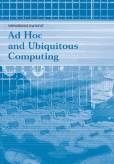
International Journal of Ad Hoc and Ubiquitous Computing
Exploring the Dynamics of Ubiquitous NetworksThe International Journal of Ad Hoc and Ubiquitous Computing, published by InderScience Enterprises Ltd, is a premier platform dedicated to advancing the fields of computer networks, communication systems, hardware, and software architecture. Since its inception in 2005, this journal has served as a critical resource for researchers, professionals, and students aiming to explore the intricate dynamics of ubiquitous computing and ad hoc networks. Though currently not an open-access journal, its scholarly contributions are well-recognized, as evidenced by its rank in the Scopus database, which places it within the lower quartiles of its respective categories. With an increasing focus on innovative solutions in computer science, the journal aims to facilitate knowledge dissemination and encourage interdisciplinary collaborations. Researchers are particularly drawn to the journal for its comprehensive coverage of emerging technologies, making it an invaluable asset in a world increasingly reliant on sophisticated communication infrastructures. As it continues to thrive towards 2024, the journal remains committed to fostering a vibrant academic community.

IEEE Communications Surveys and Tutorials
Leading the Way in Communications Research and EducationIEEE Communications Surveys and Tutorials is a premier journal published by the IEEE-INST ELECTRICAL ELECTRONICS ENGINEERS INC, renowned for its insightful contributions to the field of communications engineering. Since its inception in 2005, this journal has become an authoritative source of comprehensive surveys and instructional materials addressing current trends and advancements in communication technologies. With an impressive Q1 ranking in Electrical and Electronic Engineering, it ranks first among 797 journals in its category, placing it firmly in the 99th percentile according to Scopus metrics. Researchers, professionals, and students alike benefit from its well-researched articles, making it an essential resource for those seeking to deepen their understanding or stay updated on cutting-edge innovations. Although it does not currently operate as an open-access outlet, the journal's commitment to excellence ensures that each publication is a valuable asset for the academic community.

JOURNAL OF HIGH SPEED NETWORKS
Pioneering Research in Computer Networks and CommunicationsJOURNAL OF HIGH SPEED NETWORKS, published by IOS PRESS in the Netherlands, serves as a vital platform for the dissemination of cutting-edge research in the fields of Computer Networks and Communications, Hardware and Architecture, and Information Systems. With an ISSN of 0926-6801 and an E-ISSN of 1875-8940, this journal has been integral to the academic community since its inception in 1992, providing a dedicated space for innovative studies and findings. Although categorized in the Q4 quartile in its various fields for 2023, the journal remains committed to advancing knowledge and fostering collaboration among researchers, professionals, and students alike. By offering insights into the complexities of high-speed networks and related technologies, the JOURNAL OF HIGH SPEED NETWORKS continues to play a significant role in shaping the future of digital communications and infrastructure. This journal does not operate as an open-access journal; however, it remains a key resource for professionals seeking to stay informed on the latest developments and trends in this fast-evolving discipline.
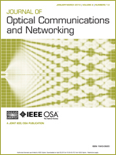
Journal of Optical Communications and Networking
Unveiling Breakthroughs in Optical NetworkingJournal of Optical Communications and Networking, published by Optica Publishing Group, stands at the forefront of research in the rapidly evolving field of optical communication and networking. With an impressive 2023 Q1 ranking in Computer Networks and Communications and a notable Scopus ranking of #53 out of 395, this journal serves as a vital resource for academics and professionals keen on exploring innovative solutions and emerging technologies. Operating under the ISSN 1943-0620 and E-ISSN 1943-0639, it publishes high-quality, peer-reviewed articles that span a wide range of topics from theoretical insights to practical applications in optical systems. As an Open Access publication, it ensures global dissemination of knowledge, allowing researchers and enthusiasts alike to contribute to and access cutting-edge findings. Since its inception in 2009, the journal has fostered a collaborative platform for authors and readers, stimulating advancements in the interconnected domains of optical communications and networking through 2024 and beyond.
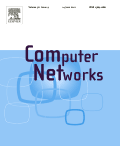
Computer Networks
Shaping Tomorrow's Networking LandscapeComputer Networks, a prestigious journal published by Elsevier, stands at the forefront of the field of computer networking and communications. Established in 1978, this journal has consistently provided a robust platform for the dissemination of high-quality research, currently holding a Q1 ranking in its category as of 2023, specifically within the Computer Science - Computer Networks and Communications sector, placing it in the top 10% of journals in its field (ranked #38 out of 395). With a focus on innovative networking technologies and fundamental theories, Computer Networks showcases original research articles, comprehensive reviews, and significant advancements that drive the academic community and industry practices forward. Although it follows a non-open access model, it remains widely accessible through various academic databases, ensuring that professionals, researchers, and students can engage with its valuable content. The journal's commitment to excellence contributes to its high impact factor, solidifying its role as an essential resource for those aiming to stay at the cutting edge of networking research.

Proceedings of the ACM on Measurement and Analysis of Computing Systems
Elevating Standards in Computing Research and AnalysisProceedings of the ACM on Measurement and Analysis of Computing Systems, published by the Association for Computing Machinery, is a pivotal journal in the realms of Computer Science and Engineering, particularly esteemed for its comprehensive focus within the fields of Computer Networks and Communications, Hardware and Architecture, and Safety, Risk, Reliability and Quality. With an impactful presence since its convergence in 2019—and now spanning from 2021 to 2024—this journal upholds rigorous standards, reflected in its classification as Q1 in Computer Science (miscellaneous) and in key safety-related categories. Researchers and professionals will find the journal's emphasis on measurement and analytical solutions critical for advancing computational efficiency and system reliability in real-world applications. The journal does not currently have open access, maintaining its academic rigor and exclusive content that aims to serve the tech-savvy community dedicated to exploring and addressing the challenges within modern computing systems. With Scopus rankings demonstrating a steady impact in the field, particularly recognised within safety and reliability domains, the Proceedings of the ACM stands as an indispensable resource for those seeking to deepen their expertise and contribute to the evolving landscape of computing research.

IEEE COMMUNICATIONS MAGAZINE
Advancing the Frontier of Communications TechnologyIEEE Communications Magazine, published by the Institute of Electrical and Electronics Engineers (IEEE), is a leading journal in the fields of Computer Networks and Communications, Computer Science Applications, and Electrical and Electronic Engineering. With an impressive impact factor reflected in its Q1 quartile rankings across multiple categories, this periodical stands at the forefront of technological advancement and innovation. Since its inception in 1979, the magazine has been committed to disseminating high-quality research and insightful reviews that address current issues in communications technology. Targeting an audience that includes researchers, industry professionals, and students, IEEE Communications Magazine strives to foster a deeper understanding of emerging trends and challenges in the communications sector. Its affiliation with IEEE, a global leader in advancing technology, underlines the journal's credibility and significance in supporting scholarly communication in electrical and electronic engineering. The magazine operates without open access options, necessitating subscription or institutional access for its comprehensive content.
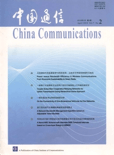
China Communications
Transforming Ideas into Innovations in Communication EngineeringChina Communications is a prestigious peer-reviewed journal published by the China Institute of Communications, dedicated to advancing the field of telecommunications and information technology. With an impressive Q1 ranking in both Computer Networks and Communications and Electrical and Electronic Engineering, this journal stands out as a leading source of cutting-edge research and innovative solutions in the engineering domain. The journal aims to provide a platform for scholars and practitioners to share their findings on the latest trends, technologies, and methodologies impacting the communications landscape in China and beyond. It is particularly noted for its high visibility in the academic community, as demonstrated by its Scopus rankings, which place it in the top percentiles for both fields. Through its commitment to quality content, China Communications contributes significantly to the advancement of knowledge, making it an invaluable resource for researchers, professionals, and students alike.
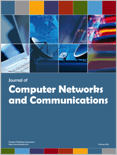
Journal of Computer Networks and Communications
Transforming Communication Through Rigorous ScholarshipThe Journal of Computer Networks and Communications is a premier open-access journal published by HINDAWI LTD, dedicated to advancing the field of computer networks and communications. With an ISSN of 2090-7141 and an E-ISSN of 2090-715X, this journal has been accessible to researchers since its inception in 2011, promoting widespread dissemination of knowledge in this rapidly evolving discipline. Based in Egypt, the journal's editorial standards are upheld through a rigorous peer-review process, contributing to its strong academic reputation. As of 2023, it holds a commendable Q2 ranking in Computer Networks and Communications and a Q3 ranking in Information Systems within its category quartiles. According to Scopus rankings, it occupies the 141st and 143rd positions in its respective fields, showcasing its relevance and influence in the academic community. The journal's mission is to publish high-quality research that addresses contemporary challenges in networking technologies and systems, making it an essential resource for researchers, professionals, and students seeking to innovate and excel in these fields.
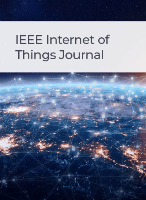
IEEE Internet of Things Journal
Pioneering Research in Connected SystemsWelcome to the IEEE Internet of Things Journal, a leading publication in the field of connected systems and smart technologies. Published by the IEEE - Institute of Electrical and Electronics Engineers Inc, this journal is dedicated to disseminating cutting-edge research and innovative developments in the Internet of Things (IoT) domain. With an impressive impact factor and recognized as a Q1 journal across multiple categories such as Computer Networks and Communications, Information Systems, and Signal Processing, the IEEE Internet of Things Journal serves as an essential resource for researchers, industry professionals, and students looking to advance their knowledge and contribute to this rapidly evolving field. Since its inception in 2014, the journal has steadily risen to prominence, ranking impressively in Scopus metrics with top positions in key categories, ensuring high visibility and credibility in the academic community. We invite you to explore the rich array of articles and access options available to support your research endeavors in one of the most transformative areas of technology today.